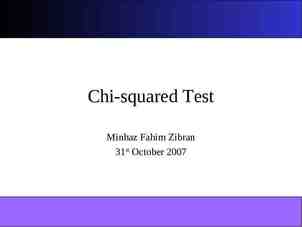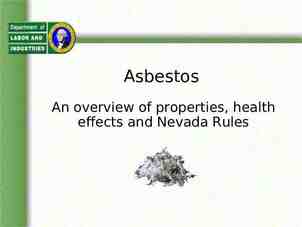Introduction to Contact Lenses Amy C. Nau
32 Slides144.00 KB

Introduction to Contact Lenses Amy C. Nau

History 1636 described by Descartes 1886 first therapeutic lens to aid healing after cataract surgery 1888 first lens for KC- scleral 1899-1912 first concepts of the corneal lens 1930’s non glass materials 1948 corneal lenses developed 1950’s hydrogels 1970’s rgp 1990’s silicone hydrogel materials

Demographics 32 million Americans wear lenses 98% single vision 2% bifocal 87% soft 12% rgp 1% pmma 66% disposable

Lens Parameters junction Peripheral curve D n’-n/r Base curve CT BCR PCR Pcr width Scr width OZ OAD

Lens Parameters Saggital Height BC 6.5 BC 8.1 diameter If diameter is constant, decreasing the base curve (steeper) increases the saggital Height. Aspheric lenses have reduced saggital depth compared to spherical lenses.

Anatomy of the Contact Rx Brand/BC/power/diameter Brand/BC/power/diameter/oz/ct/peripheral curve details/material

Oxygen Dk- measures oxygen permeability of a material. D diffusion coefficient for oxygen movement in the material k solubility constant of oxygen in material Dk/t the Dk value divided by the center thickness (t). Measures oxygen transmissibility

Lens Designs Aspheric – Peripheral only, total, bi(posterior OZ/ant pc) Ballasted (prism) Fenestrated Lenticular (aphakia) Toric – FST, BST, Bi Truncated

Lens Materials RGP PMMA Silicone acrylate Dk 15-55 Fluoropolymer (FLP) Dk up to 150 – Excellent wettability – Deposit resistant – (non silicone polymers) Soft HEMA (hydroxyethylmethacry late) – Absorbs water. 10% increase doubles Dk – Water content 37-79% Silicone Hydrogel – Siloxane cross linker – Hydrophobic – Reduced water content

Instruments Keratometer Lensometer- convex side up (bvp) Slit lamp Topography Radiuscope CL comparators-project image 20x Thickness gauge

Patient Evaluation Contraindications – – – – – – – – – – – Chronic blepharoconjunctivitis Recurrent/inflamed pterygium or pinguecula Bells Palsy with corneal anesthesia Poor hygeine Chemical exposures Severe allergy Inability to handle lens Very dry eye TED Uncontrolled Dm AIDS?

History Full medical hx Ocular hx Medication hx Contact lens hx Spectacle hx Hobbies/occupational needs Motivation

Conditions that cause problems Chronic allergy Dry eye GPC Recurrent infections Sometimes prior sx Neovascularization Sometimes strabismus Pregnancy Antihistamine use, OCP Mental status Age /Lens noncompliance

Physical Examination Visual acuity / MR Lid assessment (include upper and lower tarsus), blink patterns, mgd/bleph, apeture Basic dry eye workup (tbut, LG, NaFl, Zone quick) Corneal status/health, esp epi, old scars and neo Pupil size, HVID Keratometry/corneal shape

Lens Selection Motivation Current lens problems need to solve Occupational needs Cosmetic needs Maintain health of eye Cost Compliance

Selection Process- Advantages and Disadvantages SOFT RGP Once the modality is selected, next step is to pick the material and the solution Finally, brand and power

Soft Lenses BC range 6.0 to 11.0 but most are 8.4 to 9.0 Power range -55D to 60D but most are /- 10D Diameter 11.0 to 24.00mm but most are 13.00 to 15.00mm Tyler’s quartery is an invaluable resource

Soft Classifications Water Content – Low 37-45% (DW); medium 46-58%; high 59-79% (EW) – More water thicker – Ionicity Manufacturing process – Spin casting, lathe cutting, cast molding Lens design Function (DW, EW, prosthetic etc) Color Bifocal/monovision Therapeutic (bandage, cosmetic Aphakic Toric (double slab off, prism ballast, truncation) Thickness

Extended Wear Use with caution Make sure eye is healthy Compliant pt Understand and accept risk Willing to have regular f/u Willing to remove lenses and wear glasses if needed. Remove q6, clean leave out for 24 h if possible then reinsert EW risk of UK 20.9/10K versus 4.1 per 10K

F/U visit for EW Acute hypoxia (CLARE) Microcystic edema GPC K neo Striae Infiltrates SPK If found, d/c EW.

Soft fitting evaluation Well centered 0.5 to 1.0mm movement with blink Limbal coverage (at least 1.0mm beyond) Stable vision Three point touch

Troubleshooting Decentration- steepen bc or increase diameter, no spin cast lenses Late decentration- look for deposits, GPC Minus OR- flatten BC Unstable VA- flatten BC if sphere (flexure) – Tight lens clear after blink, loose lens burred after blink Unstable VA (toric) steepen BC, increase diameter, change modality Too tight- flatten BC or reduce diameter

Follow up Be clear about lens regimen Make sure they can I/R F/U usually about 3-4 weeks with cls on 4 hours VA, OR, fit assessment, remove lens, examine for problems, stain with NaFl

CL problem RX: OD: -6.75-2.75x 165 Os: -8.00-0.75x 180

RGP lenses- fitting philosophies Small and thin-max tear circulation and oxygen Vault apex Small cornea steep; large cornea flat Small and steep lens ; large and flat lens On flat K Steeper or flatter than K IP, bit steeper than K, smaller diameter, thin edges LA (increased comfort); flatter than K, larger

RGP fitting technique Select the fit you want to use for the pt based on physical exam, MR and K. Select diagnostic lens if available, evaluate fit, perform OR. Select material you want to use Select care regimen

RGP fitting- determining lens power and base curve Must have MR and Keratometry

RGP fitting- problem

RGP fit- troubleshooting Discomfort- lens edge (too thick, too sharp, poor blend) Excessive movement- too flat, limbus irritated. Steepen bc or increase diameter. Too tight- edema, discomfort, redness. Flatten BC, decrease diameter, flatten PC Vision-OR, flexure, decentration, deposits, incorrect power Poor wetting d/t partial blink Deposits- enzyme, surfactants, change material, plasma tx Flexure- Over K, increase CT, stiffer material, reduce OAD, reduce OZ Solution hypersensitivity- try one with different preservative.

Solutions/Lens Care Surfactants to solubilize debris/mucous/lipids. Remove surface contaminants. RUB and RINSE off. Disinfection-killing infectious organisms – Chemical,hydrogen peroxide, thermal, UV Enzyme cleaners remove deposits chemically bound to the lens (lipoprotein, denatured lysozyme) – Papain, pancreatin, subtilisin

Solutions/Lens Care Wetting agents- reduce wetting angle making lens more comfortable (rgp) q

Follow up Lens care regimen, insertion and removal and wearing schedule should be outlined F/U in about one month with cls on 4h Visual acuity, OR, lens evaluation, remove lens and evaluate eye.






